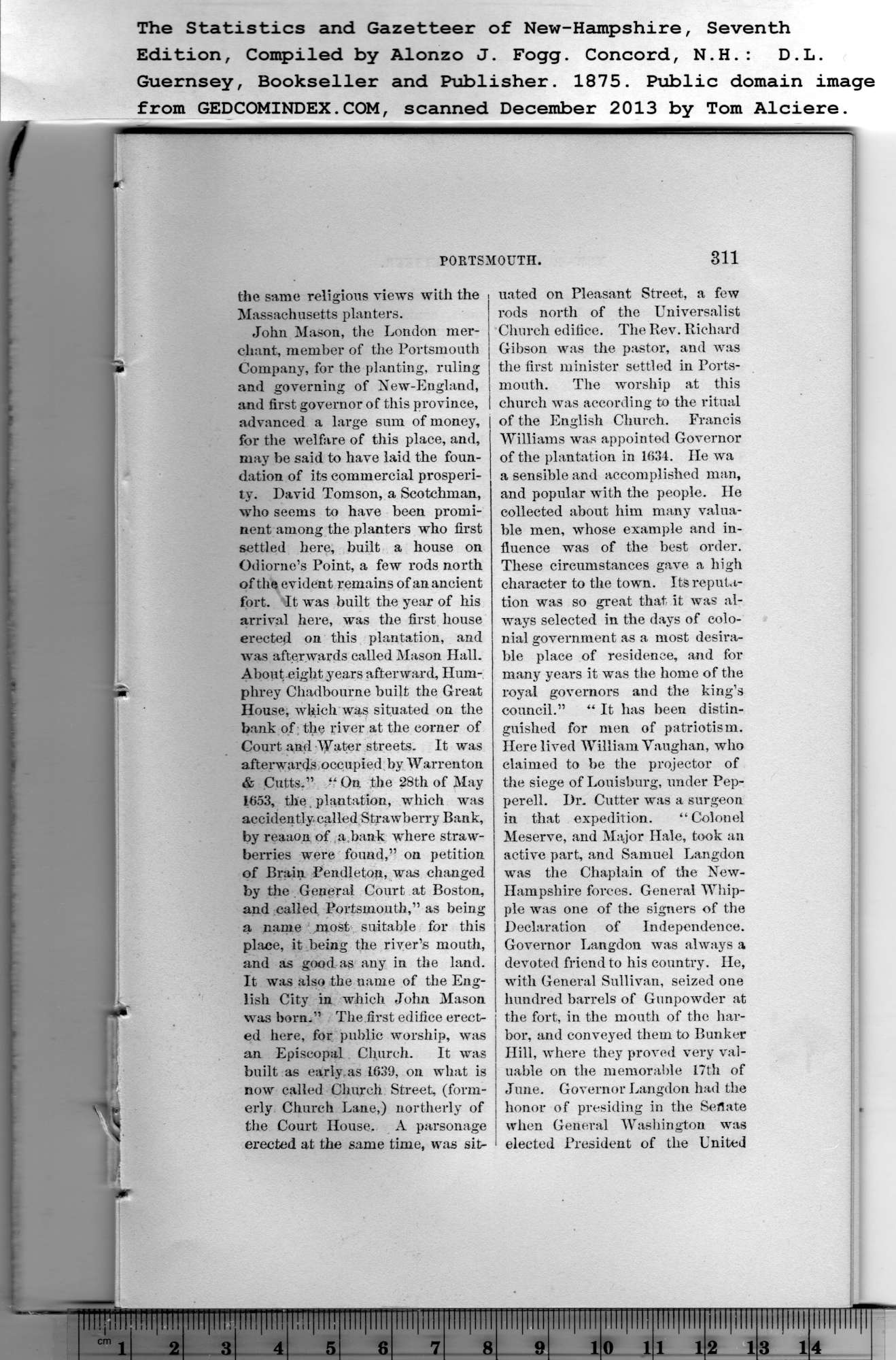|
the same religious views with the
Massachusetts planters. |
John Mason, the London mer-
chant, member of the Portsmouth
Company, for the planting, ruling
and governing of New-England,
and first governor of this province,
advanced a large sum of money,
for the welfare of this plaee, and,
may be said to have laid the foun-
dation of its commercial prosperi-
ty. David Tomson, a Scotchman,
who seems to have been promi-
nent among the planters who first
settled here, built a house on
Odiorne’s Point, a few rods north
of the evident remains of an ancient
fort. It was built the year of his
arrival here, was the first house
erected on this plantation, and
was afterwards called Mason Hall.
About eight years afterward, Hum-
phrey Cliadbourne built the Great
House, which was situated on the
bank of the river at the corner of
Court and Water streets. It was
afterwards occupied by Warrenton
& Cutt-s.” “On the 28th of May
1653, the plantation, which was
accidently, called Strawberry Bank,
by reaaon of a,bank where straw-
berries were found,” on petition
of Brain Pendleton, was changed
by the General Court at Boston,
and called Portsmouth,” as being
a name most suitable for this
place, it being the river’s mouth,
and as good as any in the land.
It was also the name of the Eng-
lish City in which John Mason
was born.” The first edifice erect-
ed here, for public worship, was
an Episcopal Church. It was
built as early, as 1639, on what is
now called Church Street, (form-
erly Church Lane,) northerly of
the Court House. A parsonage
erected at the same time, was sit-
uated on Pleasant Street, a few
rods north of the Universalist
Church edifice. The Rev. Richard
Gibson was the pastor, and was
the first minister settled in Ports-
mouth. The worship at this
church was according to the ritual
of the English Church. Francis
Williams was appointed Governor
of the plantation in 1634. He wa
a sensible and accomplished man,
and popular with the people. He
collected about him many valua-
ble men, whose example and in-
fluence was of the best order.
These circumstances gave a high
character to the town. Its reputa-
tion was so great that it was al-
ways selected in the days of colo-
nial government as a most desira-
ble plaee of residence, and for
many years it was the home of the
royal governors and the king’s
council.” “ It has been distin-
guished for men of patriotism.
Here lived William Vaughan, who
claimed to be the projector of
the siege of Louisburg, under Pep-
perell. Dr. Cutter was a surgeon
in that expedition. “ Colonel
Meserve, and Major Hale, took an
active part, and Samuel Langdon
was the Chaplain of the New-
Hampshire forces. General Whip-
ple was one of the signers of the
Declaration of Independence.
Governor Langdon was always a
devoted friend to his country. He,
with General Sullivan, seized one
hundred barrels of Gunpowder at
the fort, in the mouth of the har-
bor, and conveyed them to Bunker
Hill, where they proved very val-
uable on the memorable 17th of
June. Governor Langdon had the
honor of presiding in the Sertate
when General Washington was
elected President of the United
|
